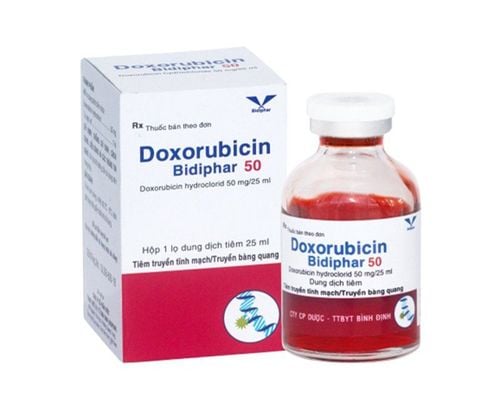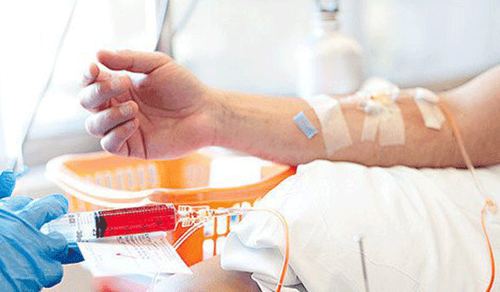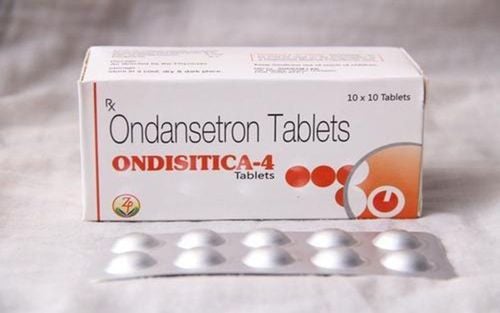This is an automatically translated article.
The article was written by doctors of Internal Oncology - Radiation Oncology Center, Vinmec Times City International General Hospital.The four standard treatments used in bladder cancer are surgery, radiation, chemotherapy, and immunotherapy. Treatment depends on the stage of the disease, age, and physical condition of the patient.
1. Surgery
One of the following types of surgery may be done:
Laparoscopic surgery (TUR): Surgery done through a cystoscope (a thin tube is inserted into the bladder through the urethra). A tool with a small wire on the end is used to remove cancer or burn away a tumor with high-energy electricity. Total cystectomy: Surgery to remove the bladder and remove the lymph nodes and nearby organs that contain cancer. This surgery may be done when bladder cancer has invaded the muscle wall, or when superficial cancer has spread to most of the bladder. In men, nearby organs that are also removed are the prostate and seminal vesicles. In women, the uterus, ovaries, and part of the vagina are also removed. Sometimes, because the cancerous lesion has spread beyond the bladder and cannot be completely removed, a cystectomy may be done just to relieve urinary symptoms caused by the cancer. Once the bladder has been removed, the surgeon will create another way to get urine out of the body. Partial cystectomy: Partial cystectomy may be performed for patients with low-grade tumors that have invaded the bladder wall but are limited to one area of the bladder. bladder. Because only part of the bladder is removed, patients can urinate normally after surgery Urine Transfer: Surgery to create a new way for the body to store and remove urine from the body. After the doctor removes all of the cancer visible at the time of surgery, some patients may receive chemotherapy after surgery to kill any remaining cancer cells. Treatment given after surgery, to reduce the risk that the cancer will return, is called adjuvant therapy.
2. Radiation therapy
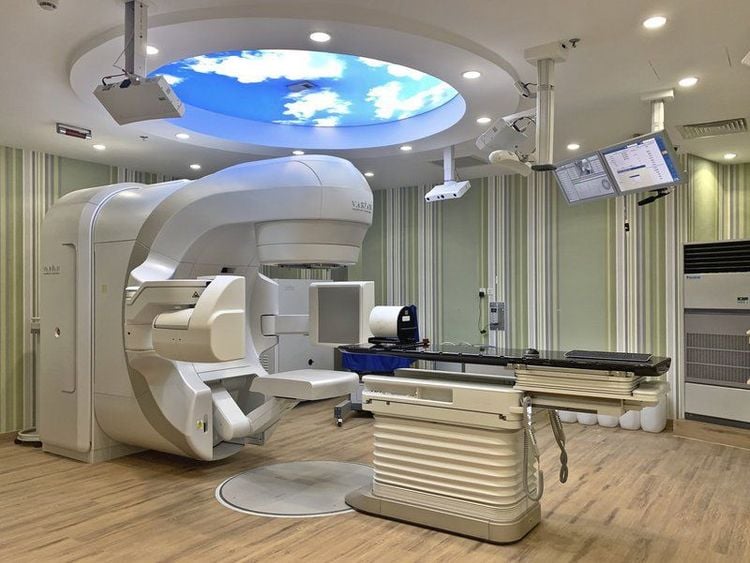
Liệu pháp xạ trị bên ngoài sử dụng máy bên ngoài cơ thể để chiếu bức xạ tới bệnh ung thư
Radiation therapy is cancer treatment that uses high-energy X-rays or other types of radiation to kill cancer cells or keep them from growing. There are two types of radiation therapy:
External radiation therapy uses a machine outside the body to deliver radiation to the cancer. Internal radiation therapy: radioactive material sealed in a needle, seed, wire, or catheter is placed directly into or near a cancerous lesion. The way radiation is given depends on the stage of the cancer. External radiation therapy is used to treat bladder cancer.
3. Chemotherapy
Chemotherapy is a treatment that uses drugs to stop the growth of cancer cells, either by killing the cells or by stopping them from dividing. When chemotherapy is given by mouth or injected into a vein, the drug enters the bloodstream and can reach cancer cells throughout the body (systemic chemotherapy). When chemotherapy is given directly into the cerebrospinal fluid, an organ, or a body cavity such as the abdomen, the drugs primarily affect the cancer cells in those areas (local chemotherapy). For bladder cancer, topical chemotherapy can be given into the bladder through a tube inserted into the urethra. The type of chemotherapy will depend on the type and stage of cancer being treated. Multiple chemotherapy is treatment using more than one anti-cancer drug.4. Immunotherapy
Immunotherapy is a treatment that uses a patient's immune system to fight cancer. Substances made by the body or manufactured in a laboratory that are used to strengthen, direct, or restore the body's natural defenses against cancer. This type of cancer treatment is also known as biological therapy or biological therapy.
There are different types of immunotherapy :
Immune checkpoint inhibitor therapy : PD-1 inhibitors are a type of immune checkpoint inhibitor therapy used in the treatment of cancer bladder. ENLARGE BCG (bacillus Calmette-Guérin): Bladder cancer can be treated with an immunotherapy called BCG. BCG is dissolved in a solution and placed directly into the bladder with a tube. pine
5. Treatment options by stage
Bladder cancer is divided into 4 stages depending on the extent of invasion and metastasis.5.1 Stage 0, I : Non-invasive papillary carcinoma and carcinoma in situ
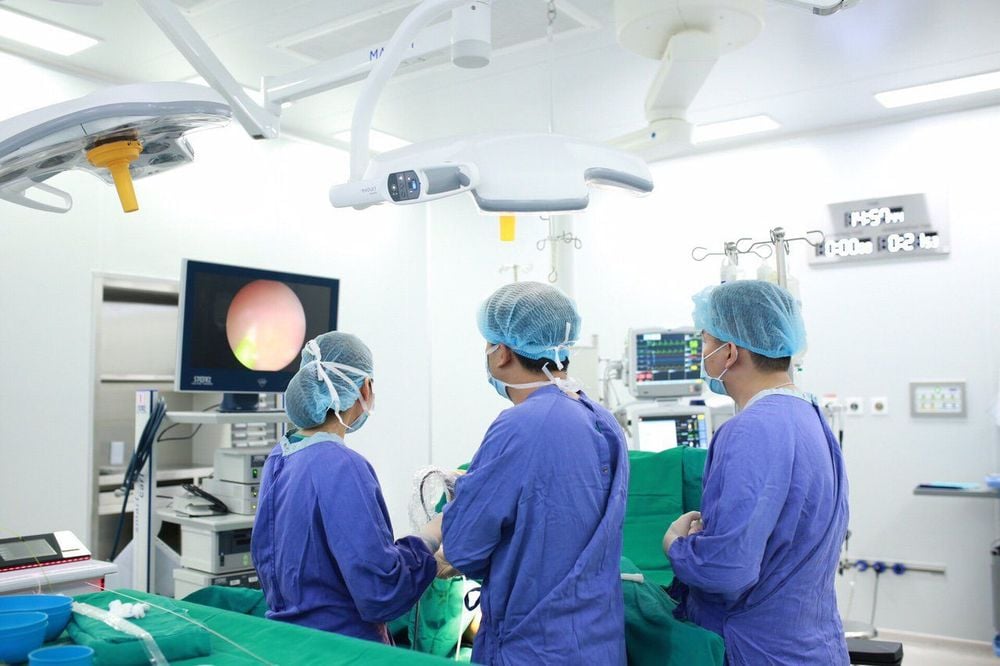
Cắt bỏ u qua nội soi
Stage 0 treatment may include:
Endoscopic resection followed by additional local chemotherapy (or BCG) after surgery. Partial cystectomy. Total cystectomy
5.2 Stage II and III Bladder Cancer
Treatment for stage II and III bladder cancer may include:
Partial cystectomy. Combination chemotherapy followed by radical cystectomy. A urine diversion may be performed. External radiation therapy with or without chemotherapy. Partial cystectomy with or without chemotherapy. Endoscopic resection of the tumor.
5.3 Stage IV bladder cancer
Treatment for stage IV bladder cancer that has not spread to other parts of the body may include the following:Chemotherapy. Partial cystectomy or followed by chemotherapy. External radiation therapy with or without chemotherapy. Cystectomy as palliative therapy to relieve symptoms and improve quality of life. Treatment for stage IV bladder cancer that has spread to other parts of the body, such as the lungs, bones, or liver, may include the following:
Chemotherapy with or without local treatment (surgery) surgery or radiation). Immunotherapy (Immune checkpoint inhibitor therapy). External radiation therapy to relieve symptoms and improve quality of life. Urine transfer: Surgery to create a new way for the body to get urine out of the body. Treatment for recurrent bladder cancer depends on previous treatment and where the cancer has recurred. Treatment for recurrent bladder cancer may include:
Combination chemotherapy. Immunotherapy (Immune checkpoint inhibitor therapy). Surgery for superficial or localized tumors. Surgery may be followed by biological therapy and/or chemotherapy. Radiation therapy as palliative therapy to relieve symptoms and improve quality of life.
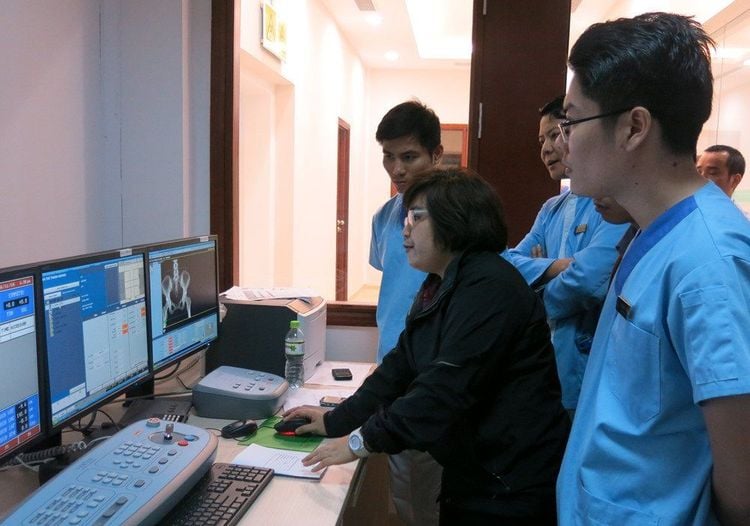
Please dial HOTLINE for more information or register for an appointment HERE. Download MyVinmec app to make appointments faster and to manage your bookings easily.
Source NIH 2019






